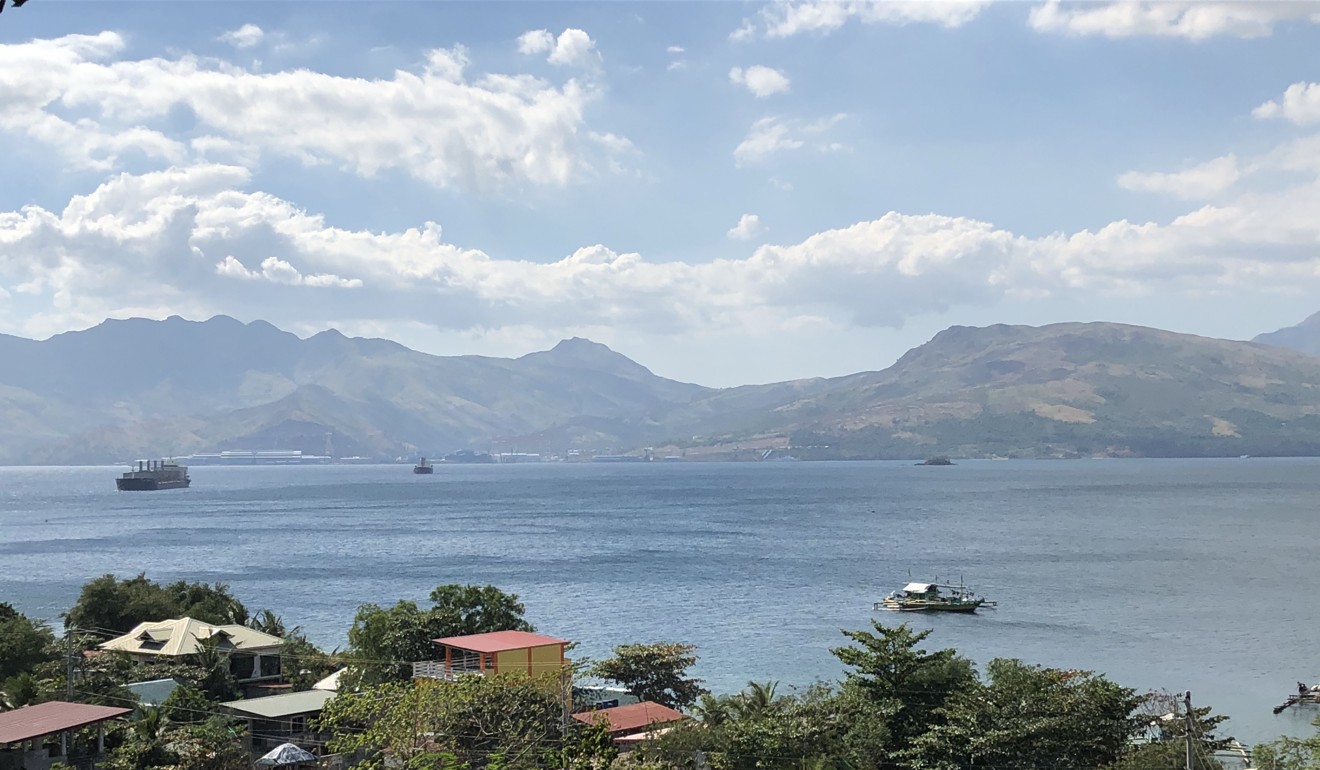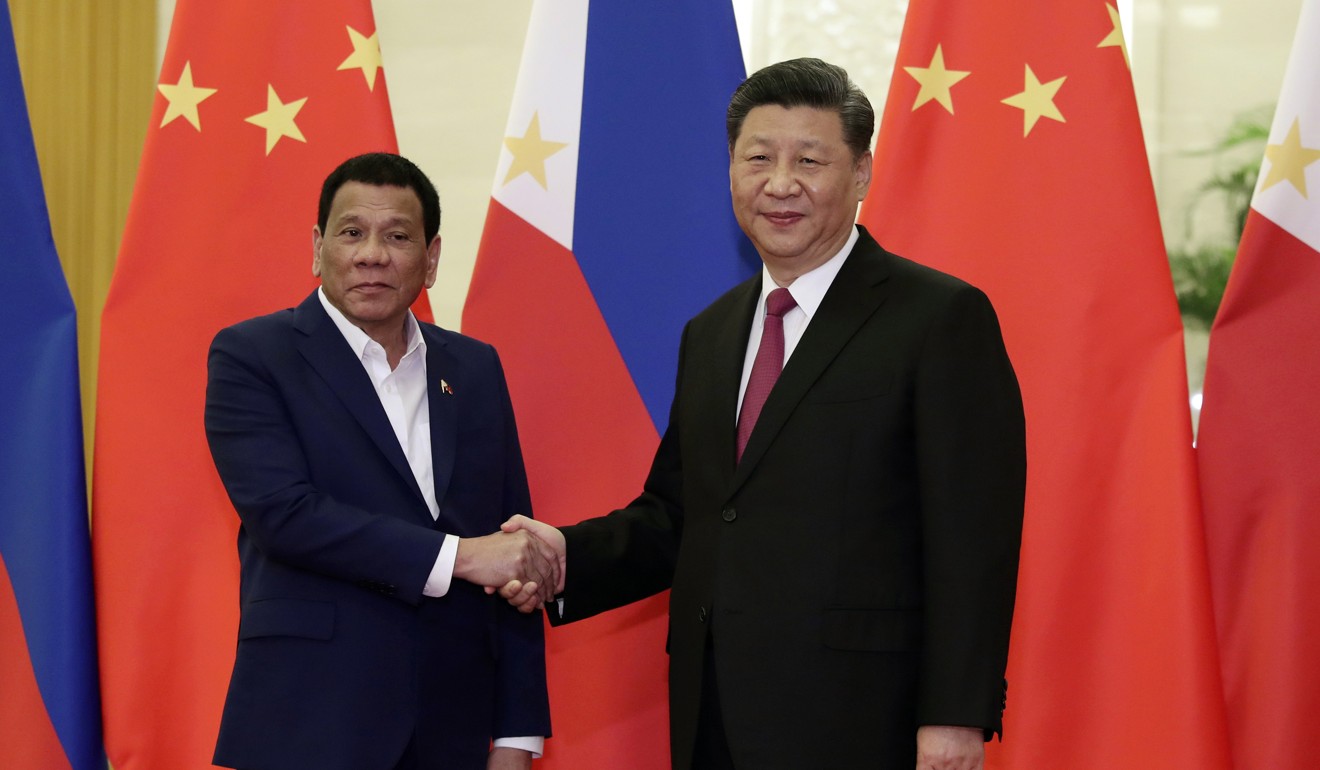
Bidding for China-funded railway in Philippines to start soon under Duterte’s infrastructure build-up
- Chinese companies will soon be able to bid for the 71km Subic-Clark Railway Project under the “Build, build, build” infrastructure initiative
- But due to their size and scale, many of these projects are unlikely to be finished before the end of President Rodrigo Duterte’s term in 2022

Bidding for a railway funded by the Chinese government will start in a few weeks in the Philippines, but the project will not be completed during Rodrigo Duterte’s presidency, the official in charge of his ambitious “build, build, build” infrastructure programme said on Monday.
Vivencio “Vince” Dizon, who was appointed earlier this month as Duterte’s presidential adviser on flagship programmes and projects, said he hopes construction of the 71km Subic-Clark Railway Project (SCRP) can begin by the second half of next year. The goal is to have it “substantially completed” by 2022, which is when Duterte’s term ends.
The project, estimated to cost 50 billion pesos (US$960 million), was originally “targeted” for commercial operation within Duterte’s term.
However, it was delayed when one of the three Chinese companies which the Chinese government had shortlisted to bid as contractors was disqualified for an unspecified reason by the Philippine government. Department of Transport and Communications Secretary Arthur Tugade told reporters last month that Philippine bidding laws require three bidders.

Railway projects have featured heavily in Chinese President Xi Jinping’s signature Belt and Road Initiative, an ambitious multibillion-dollar infrastructure financing effort to boost global connectivity. In Southeast Asia, Chinese firms are involved in Malaysia’s 640km East Coast Rail Link and a 142km railway between the Indonesian cities of Jakarta and Bandung, among other things.
Lucio Pitlo III, a fellow at the Asia-Pacific Pathways to Progress Foundation, said China is funding infrastructure projects such as railways to export its surplus capacity, to have an outlet for its outbound investments, to create jobs and business opportunities for its people and companies, and to “boost regional and global connectivity as part of its Belt and Road Initiative project”.
Pitlo said that while some railway projects in Africa like the Addis Ababa-Djibouti and Nairobi-Mombasa lines have been completed, “projects in Southeast Asia are experiencing delays because of absorptive capacity and right of way procurement issues”.
Security analyst Chester Cabalza said building railways is a behaviour of a rising superpower. “By building railways, you can expand your economic clout. Railways are carrying the Chinese name and people in far-flung areas get to know this is the new kid on the block.”
This is the second time China is lending the Philippines money for a railway project. The first one, called Northrail, was abruptly shelved by former president Benigno Aquino III, who said the project was grossly overpriced.
Dizon described the SCRP as one of the president’s legacy projects and “the first phase of an entire cargo railway system on the island of Luzon”, which will connect Clark to the ports of Subic, Manila and Batangas “in order to increase our efficiency in our movement of goods” and reduce traffic caused by cargo trucks.
The president never said we’re gonna finish all these projects during his term. That’s impossible
Asked what “magic wand” he could wave to move projects faster, Dizon replied that “as much as I would love there to be a magic wand or a silver bullet, there is none”.
“What we can do now is work harder,” he said, adding that the project’s biggest challenge was “right of way acquisition” or the government’s ability to purchase privately-owned land on which the railway will be built.
“You know, a lot of the projects in ‘build, build, build’ will not be completed by President Duterte. A lot of these projects will move on to the next administration, even maybe move into future administrations,” Dizon said.
“It’s not that they do not have to be completed. It’s just that projects of this size and magnitude, it’s impossible for them to be completed in two years or three years. The president never said we’re gonna finish all these projects during his term. That’s impossible,” he explained.
“Realistically, some of them will be partially completed.”
The slow pace of Duterte’s “build, build, build” programme has come under fire from the opposition, especially after the socio-economic planning secretary told senators last month that construction had started in only nine of the 75 flagship infrastructure projects. Dizon insisted however that Duterte was faster than previous presidents in processing projects.
Dizon also said government officials were often asked why the Duterte administration was taking credit for projects started by his predecessor, President Aquino. “Does it really matter who started it?” he replied. “To us at least in this government, it doesn’t matter. What is important is that these projects get finished,” he said.

Still, Dizon pointed out that only Duterte had the boldness of vision to start a new government centre in what is to be known as New Clark City (NCC), northwest of Manila.
As for the progress in the proposed US$2 billion industrial estate planned by the China Gezhouba Group in NCC, Dizon merely said, “we have pursued that actively since we signed the MOU in November” last year.
“China is an integral partner in our infrastructure build-up,” Dizon said.